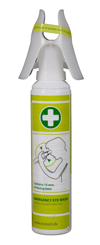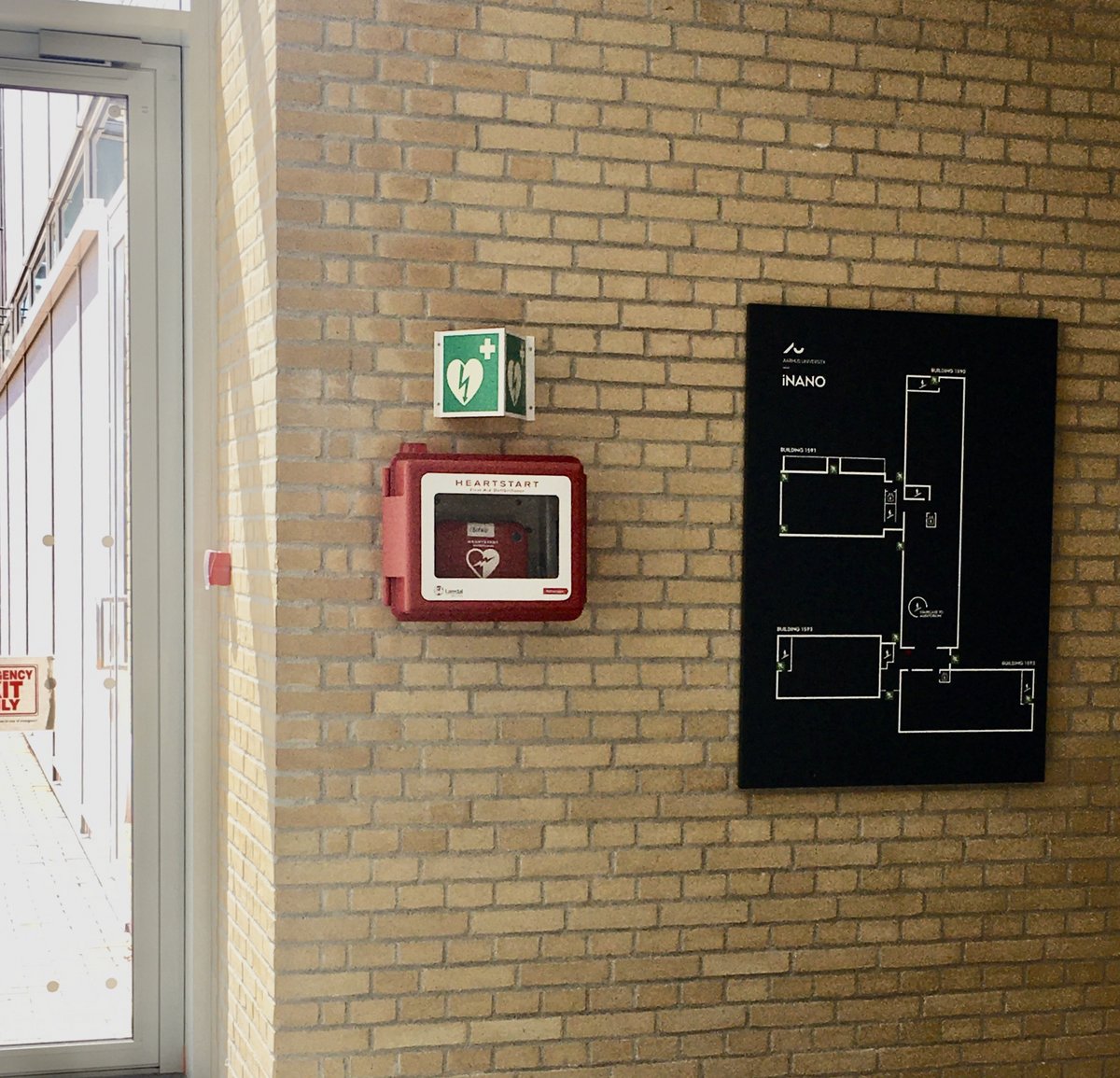First aid
Remember to register all accidents!
All accidents - both large and small - must be notified to the safety representative.
Near miss accidents must also be registered. A near miss is an event that could have developed into a work accident, but where nothing happened to the employee.
Near-miss accidents are characterized by the fact that the accident was avoided because of pure luck.
The four main steps of first aid
- stop the source of the accident
- give life-saving first aid
- call for any help needed
- give general first aid
Calling for help
Land line phone: Dial 0; wait for the tone, then dial 112. Cell phone: Dial 112
When you are connected, state clearly:
- Where the accident has happened
- What has happened
- How many persons are injured
- Who is calling
- From where the call is being made
- Make sure that the Emergency Service is met at the entrance to the building and is informed about all the details.
- Inform the safety representative/supervisor
Burns
- Immediately wash the burned area with cold water
- Remove loose clothing from the burned area
- Continue washing while someone else fetches a bowl of tepid water (22-23 °C)
- Dip the burned part into the tepid water and keep it there until the pain disappears - but for at least half an hour
- Cover the affected area with a cold wet compress and take the victim to the hospital’s casualty ward.
Frostbite
Frostbite can be divided into three categories:
- First degree:
- Produces white numb areas on the skin
- Second degree:
- Produces white and harder tissue in a large area, often blistering while thawing.
- Third degree:
- Produces white and hard tissue that when tapped sounds like tapping a piece of wood, in the worst case scenario. The tissue is dead and becomes spongy while thawing.
In all categories, first aid involves immersion in 38 degrees warm water. Be aware that this can be very painful. When the skin becomes red, a sterile bandage should be applied, carefully avoiding any pressure or cooling. For second and third degree burns, seek a doctor.
Corrosion - when exposed to internal, external and eye corrosion
Internal corrosion:
- Do not induce vomiting
- Immediately drink plenty (milk or water)
- Call for ambulance or bring the injured person to the hospital’s causality ward. Bring information about the corrosive substance (name, chemical formula and container).
External corrosion:
- Rinse immediately with plenty of water
- Remove clothing - continue rinsing for 10 minutes.
- If pain continues, rinse for another 10 minutes.
- If there is no improvement, take the victim to the hospital’s casualty ward, by ambulance if necessary. Bring information about the corrosive substance, (name, chemical formula, and container)
Eye Corrosion:
- Immediately flush with plenty of water in non-vigorous jet with the fixed eye shower at the sink.
- Rinse from the nose root and outward.
- Continue to rinse with the eye wash bottle.
- Always seek medical or go to the hospital’s casualty ward
- Bring information about the corrosive substance (name, chemical formula, and container).
Poisoning
When the victim is conscious:
- If the substance involved is neither an organic solvent nor a corrosive then vomiting can be induced by sticking a finger down the victim’s throat, possibly after giving a drink of water.
- Place the victim in a recovery position.
- Take the victim and the vomit to a casualty ward, by ambulance if necessary. Bring also the vomit to the hospital.
When the victim is unconscious:
- Place the victim in a recovery position.
- Call for an ambulance. Bring information about the poison (name, chemical formula, container, if any).
First Aid Supplies
A First Aid box is to be found in the laboratories on each floor and in the student helper office. Make a note where they are to be found before you need them. Inform your Occupational Health and Safety representative/supervisor if something is missing from the box.
A defibrillator is available in the entrance hall of building 1590, readily accessible from Gustav Wieds Vej and Langelandsgade
Use of eye rinsing bottles
 Eye rinsing bottles with intact seal must found be in all laboratories; either the older type with sterile physiological saline, which is pressed against the eye, after which the plastic bottle is squeezed and thus the eye is rinsed.
Eye rinsing bottles with intact seal must found be in all laboratories; either the older type with sterile physiological saline, which is pressed against the eye, after which the plastic bottle is squeezed and thus the eye is rinsed. - The new type containing a phosphate buffered (pH 7.4) sodium chloride solution (PBS). This achieves far better and faster neutralization of bases and acids, and that prolonged rinsing of the eye at no time becomes painful. There is sufficient liquid in one bottle for 15 min continuous rinsing. The bottles are designed in accordance with upcoming EU rules, which say that the bottle must be able to be used quickly, even if you are alone and that there must be a possibility for 30 min of continuous rinsing (the bottle holder always has 2 bottles).
- Remove contact lenses quickly
- Put the bottle against the eye
- Press the two "wings"; The seal is broken and the lower and upper eyelids are gently forced up and the rinse starts with a very soft jet.
- The eye wash bottle works in any position and should be used during transport to the hospital’s casualty ward.
With helper:
In severe etching, a reflective eye closure follows, so the affected person cannot adequately flush his/her own eye. The nearest one has to help.
The liquid in the eye wash bottles must always be sterile - see the instructions on the bottle.
